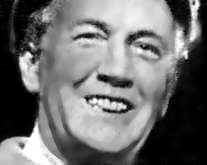Name Fritz Wagner | Role Cinematographer | |
 | ||
Movies Similar People Albin Grau, Henrik Galeen, Greta Schroder, Thea von Harbou, Gustav von Wangenheim Born 5 December 1884, Schmiedefeld am Rennsteig, Germany | ||
ONE FILM / ONE SHOT #52: Spies
Fritz Arno Wagner (5 December 1889 – 18 August 1958) is considered one of the most acclaimed German cinematographers from the 1920s to the 1950s. He played a key role in the Expressionist film movement during the Weimar period and is perhaps best known for excelling "in the portrayal of horror" according to noted film critic Lotte H. Eisner.
Contents
- ONE FILM ONE SHOT 52 Spies
- Background
- Career as cinematographer
- Death
- Portrayals
- Partial filmography
- References

Background
Born in Schmiedefeld am Rennsteig, Germany, Wagner received his training at the Académie des Beaux-Arts in Paris. In 1910, while still attending the University of Leipzig, he managed to secure a job as a clerk at the Pathé film company. In 1912, he became both secretary and chef at the Pathé offices in Vienna and later in Berlin.
Career as cinematographer
Interested in cinematography he became a newsreel cameraman in 1913 and was stationed in New York for Pathé Weekly where he reported on the Mexican Revolution. At the outbreak of World War I in 1914, he returned to Germany to enlist in his country's elite Hussar cavalry whilst still filming war reports. However, after being wounded, he decided to take the job of stills photographer and then 2nd cameraman at Projektions-AG Union PAGU. In 1919, he went to work as a primary cameraman for Decla-Bioscop.
Along with Karl Freund, Wagner became Germany's leading cinematographer of the 1920s and 1930s, a master of the dark, moody lighting that characterized the expressionist movement. He worked with some of Germany most prominent directors, including Ernst Lubitsch on Madame Du Barry (1919), F. W. Murnau on The Haunted Castle (1921), The Burning Soil (1922) and his classic Nosferatu (1922), and G.W. Pabst on four features, The Love of Jeanne Ney (1927), Westfront 1918 (1930), Comradeship (1931) and The Threepenny Opera (1931) based on the Bertolt Brecht and Kurt Weill musical. He also collaborated with Fritz Lang on four films, Destiny (1921), Spies (1928), M (1931) and The Testament of Dr. Mabuse (1932).
After the Nazis took over in 1933, causing many of the country's leading film directors to flee Germany for the U.S. (including his main collaborators: Murnau, Pabst and Lang) Wagner's career began to decline. To make ends meet he abandoned his unique style and turned to making glossy costume epics and musicals for The Ministry of Propaganda at Universum Film AG [Ufa] where he had once worked under Erich Pommer. After WWII, he worked for a couple of years as a director of photography of documentaries and newsreels before returning to feature films at the Deutsche Film-Aktiengesellschaft [DEFA] production company at Studio Babelsberg.
Death
On 18 August 1958, Wagner died in Göttingen in a tragic automobile accident (as his colleague Murnau had 27 years earlier) whilst shooting the comedy, Ohne Mutter geht es nicht (It Doesn't Work Without a Mother) for director Erik Ode. He is buried at the Waldfriedhof Dahlem am Hüttenweg cemetery in Berlin.
Portrayals
In Shadow of the Vampire, a fictional film about the making of Nosferatu, Wagner is portrayed by Cary Elwes, who also played Lord Arthur Holmwood in the 1992 adaptation of Bram Stoker's Dracula
